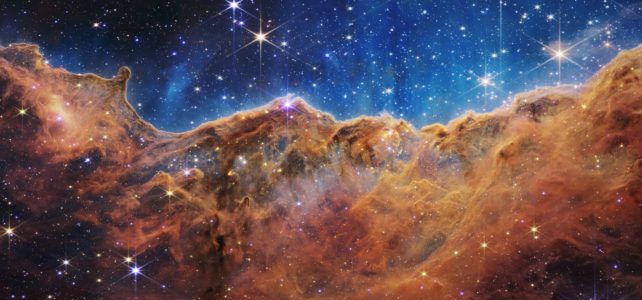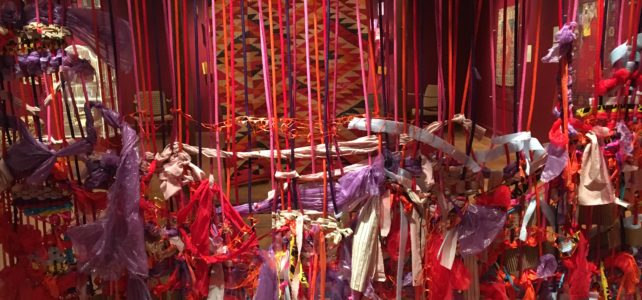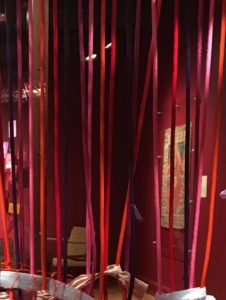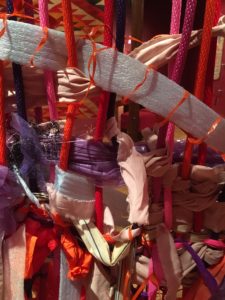As far back as I can remember, the night sky has captured my imagination, though early memories are fuzzy. My parents showed me the dusty band of light that was the Milky Way and how to find the Big Dipper. Following an imaginary line through two stars in its bowl, someone said, led to the North Star. I had limited success. The first vivid sky-gazing memory I have is of standing with our small girl scout troop in front of the science museum at night in downtown Columbus. Downtown was darker then, and we watched as the man who had led us through a journey of the “sky over Columbus” projected onto the museum’s planetarium dome set up his telescope at the top of the steps.
“We’re going to look at Saturn,” he said, bending over the telescope and peering through the eyepiece to find the planet. We took turns looking. The view took my breath away: a smooth, rounded shape rising from a thick, flat ring, The planet’s angle provided a view with little space between the rings and the planet itself. Together, they looked a bit like a white, glowing fried egg. I’ve never forgotten it. My heart opened wider and wonder flooded in. Seeing with my own eyes something that had previously existed for me only in textbooks or magazines, shining in the dark over my own city was exhilarating.
I couldn’t get enough of looking.
Over the years I’ve traveled – sometimes by myself, sometimes with family or friends – to see eclipses, meteor showers, blue moons and supermoons, or planets and stars in various configurations. At some point along my journey, I grew particularly fond of the constellation Orion, my protector. He became an icon, a door into an experience of Holy Presence that surrounds me, no matter how alone I feel.
Once, I spent a night by myself in a friend’s small cabin. I walked along the creek and a pipeline that slashed through the wooded hills. Far from the city, the black, star-splattered sky fed my soul. Before leaving the next day, I wrote in the guest log simply, “Tonight I lived on the stars.”
Truly, we live with mysteries too marvelous / to be understood.
Mary Oliver from poem “Mysteries, Yes“
James Webb Space Telescope
With people around the globe, I followed the recent release of the first images captured by the James Webb Space Telescope (Webb). I was in a doctor’s office when the broadcast began and pulled out my phone to stream NASA’s presentation. Preliminary interviews and commentary gave me time to drive home and watch most of the broadcast on a big screen. The images were stunning. Commentary explained how the infrared signals were painstakingly rendered into color images, each hue representing a different wavelength.1 As usual when witnessing such events, I cried.
Icons
You may be familiar with classic icons, the stylized paintings familiar in the Orthodox Church and often referred to as “windows into heaven.” I wrote an article2 using the word icon in a much broader sense, referring to ordinary objects, physical representations or metaphors that have become windows drawing us into communion with Holy Mystery.
The Webb images can be new icons that break open our hearts and let mystery in. Like my view of Saturn through a telescope on the museum steps.
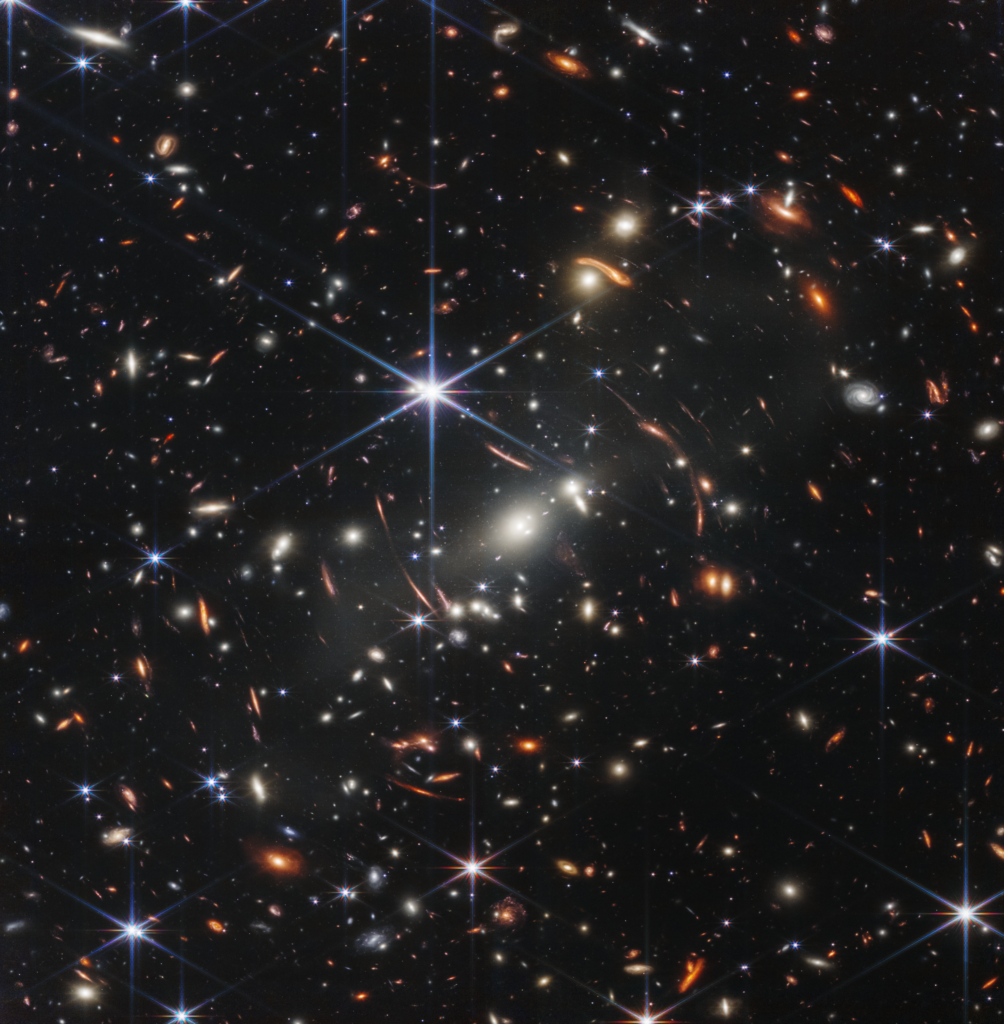
All Webb Images Credit: NASA, ESA, CSA, STScI
The first image released was Webb’s First Deep Field, a look at thousands of galaxies sparkling across the black field in just a sliver of the universe. Peering back to within a billion years after the big bang, I was reminded of Wisdom in the Hebrew Scriptures, dancing with delight, the feminine spirit creating along with God at the very beginnings of the cosmos.2
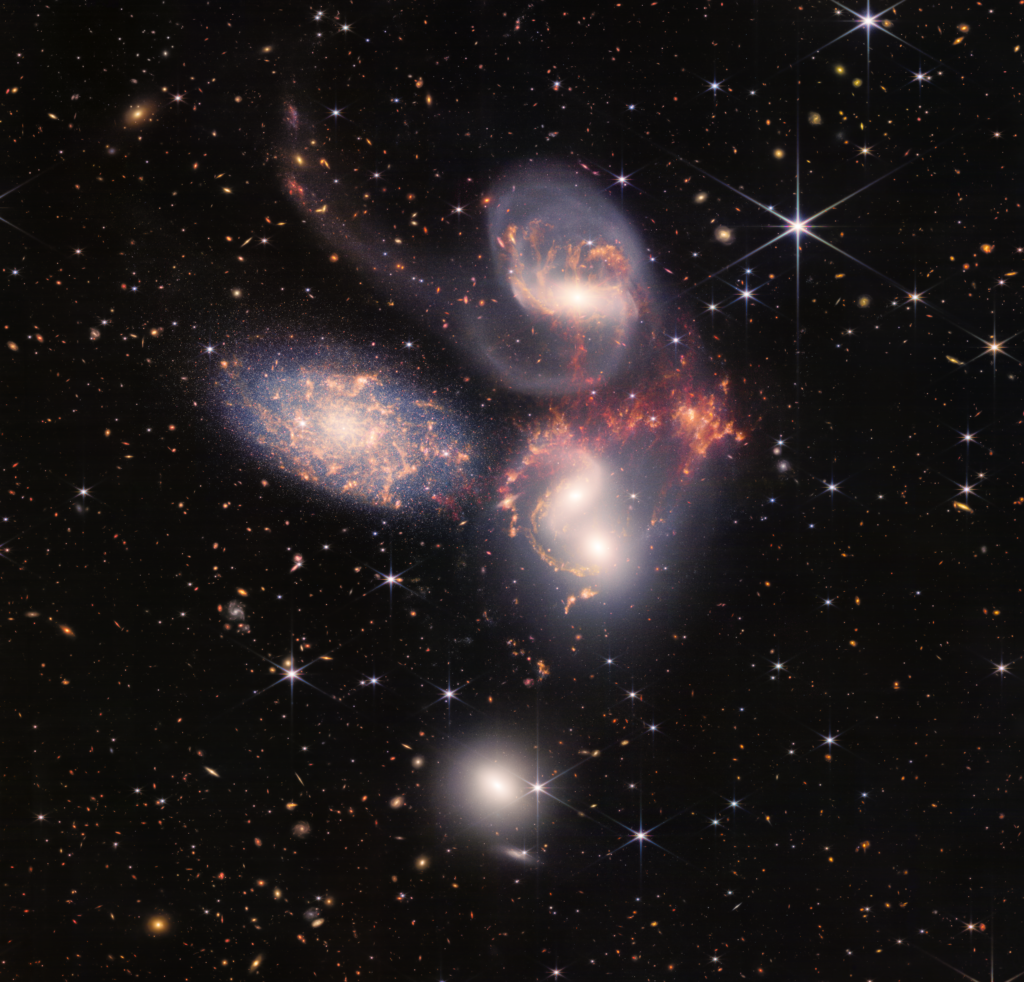
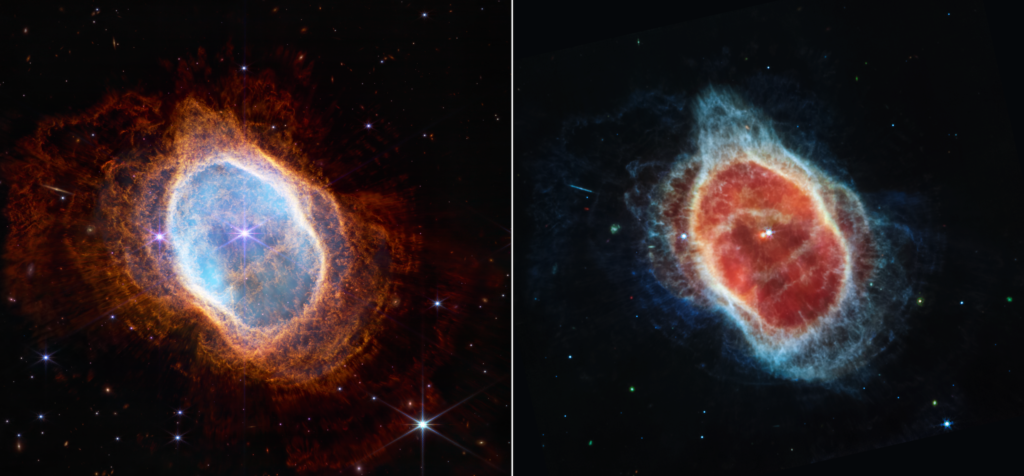
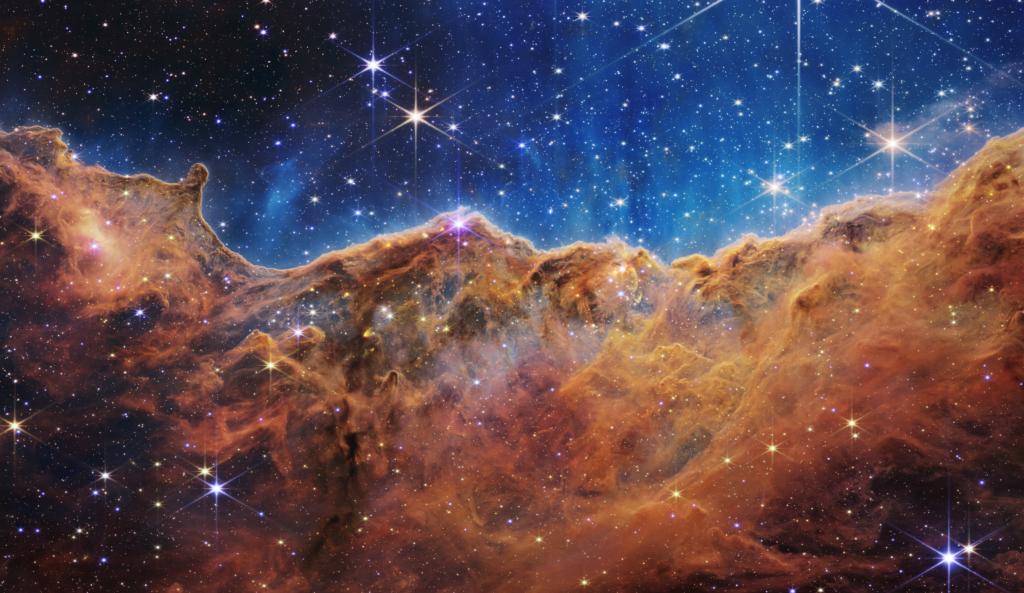
Image after image filled the television screen: Stephan’s Quintet (you might remember an earlier image of this at the beginning of the movie, It’s a Wonderful Life.), Southern Rim Nebula (clouds of gas and dust from a dying star); the Carina Nebula (a “star nursery). Everything in the universe is made of elements created in the birth and death of stars. You, me, the people you love and the ones you don’t. The insects in the soil, birds overhead, rivers, oceans. Everything. Star dust was (and is) destined to evolve into solar systems, new stars, planets, and life that may live on some of them. Might there be other creatures observing the cosmos from their place in it, contemplating the meaning of it all?
Spending time with these new icons may expand our sense of connection not only with the Creative Force that set all this in motion, but also with one another. How have we evolved into a race that finds diversity threatening rather than an opportunity to learn and wonder at the reflections of the Sacred in every bit of stardust?
Hope
Since those first images have been released, I’ve looked at them again and again, marveled at the Southern Rim Nebula, used it in meditation, and painted it to make my own icon. The images stir joy, amazement, and appreciation of the people who’ve given them to us.
But along with these emotions and thoughts, sadder ones emerge. As incredible as these images are, they aren’t enough to change the patterns of human behaviors that push us apart and despoil the creation that has taken billions of years to evolve.
My hope is that these new icons can open minds as well as hearts, inspire people to be still before such magnificence. Can we be receptive to the truth they reveal: That we are an infinitesimal bit of something beyond our most expansive imagination? That we know and understand so little of it? That humility is the proper response?
As we sit before these images and let them open a window into the beginnings of creation, can we be filled with gratitude for the love and graciousness that fills it? Can we find a way to put fear and hatred aside and recognize our kinship with the Holy One, with one another, and with all that is?
Different way of seeing
Decades ago, I backpacked across Western Europe with a good friend. We spent the summer traveling from country to country with no itinerary, meeting people from all over the world as we slept in youth hostels, the occasional hotel, and homes of friends and family. But besides meeting people from different countries, we also ran into folks from back home.
At any other time, coming from the Midwest, meeting someone from the west coast wouldn’t seem like meeting a neighbor. But across the Atlantic, when we ran into someone from Oregon, we were excited. We’d say, “I know someone in Oregon!”, or they’d say, “We have friends in Ohio!” As if we might know them. People we would have considered strangers had we met at a restaurant back home seemed like neighbors when we met in a small German town.
So, I wonder. Perhaps Webb’s images will provide a new context for us, for our vision of who is our neighbor. Seeing the immensity of the universe as we peer into deep space may provide a perspective that encourages human beings to become more aware of their connections, of their responsibility for this tiny little bit of a planet we call home. Perhaps humanity will be more willing to work together, to stop demonizing one another, and to look for ways to live and love together instead.
It’s a dream. I know. A hope. Greed, fear, the desire to “be right,” to view the world and others as either/or, them/us, the need to put others down to elevate oneself, seem to be the human default.
Seeing with new eyes, with a non-dualistic “both/and” mindset, is a journey. Placing ourselves before Webb’s images, quietly gazing at their intricate beauty, may refine our spiritual vision to better comprehend the grace they reveal. Contemplating these windows into creation with openness begins to transform us little at a time. Thank you, team James Webb!
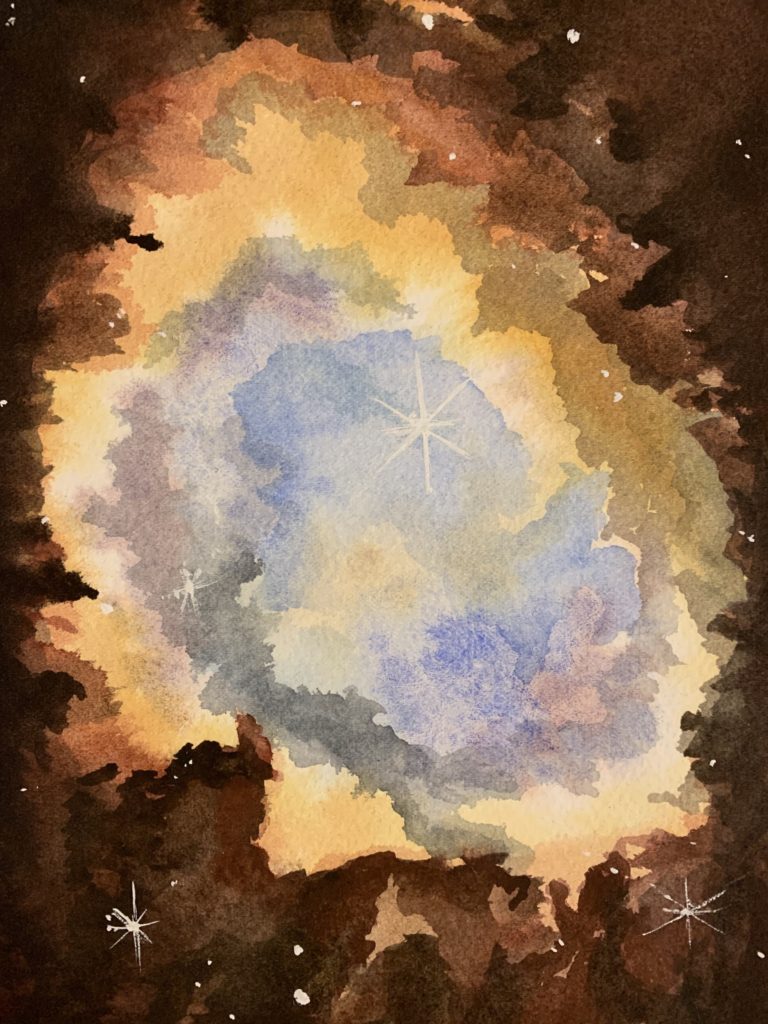
Sources:
- How the James Webb Space Telescope’s images are made Axios
- Icons: Windows into God – Finding glimpses of God in unexpected places:Mary van Balen
- Proverbs 8: 22-31
- “Mysteries, Yes” by Mary Oliver Take the time to read it. You’ll be grateful you did. I read it in Devotions: The Selected Poems of Mary Oliver published by Penguin Books, New York, 2017, p. 84. It was originally published in Evidence by Beacon Press in 2009.
Images:
Follow this link to NASA’s page, First Images from the James Webb Space Telescope, to examine the images and read information about each one.
If you missed the July 12 broadcast, you can view it here.
Comparison of images of same area taken by Hubble and by Webb” can be found here: Science Friday: Stunning JWST Images Show New Details Of The Universe
James Webb Space Telescope info:
James Webb Space Telescope Home: Goddard Space Flight Center
